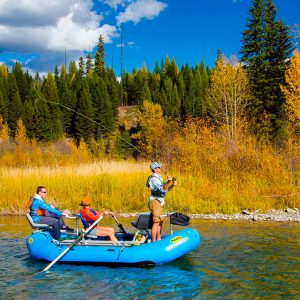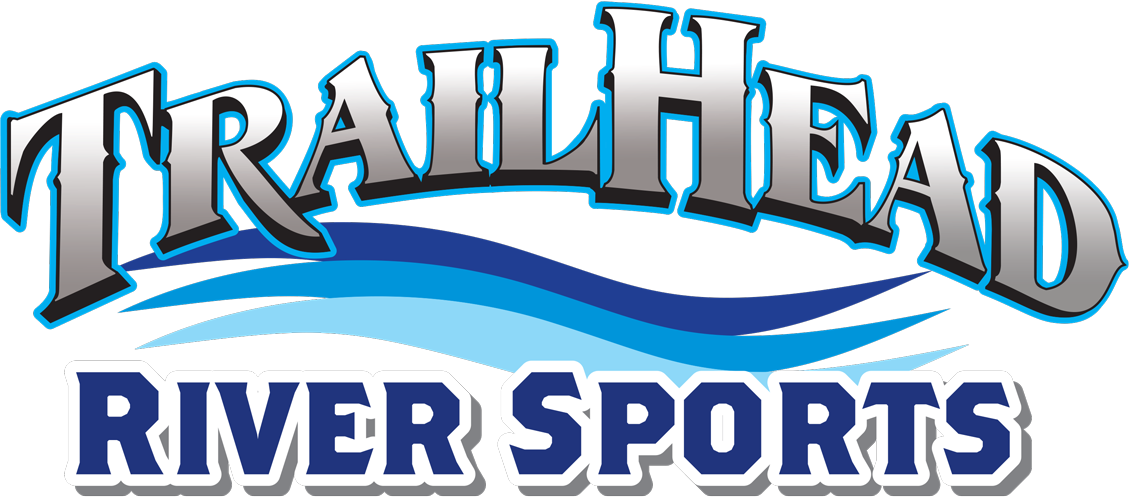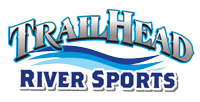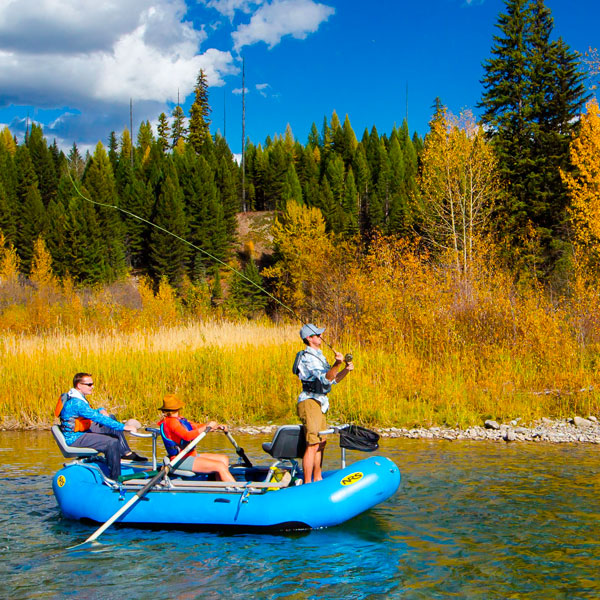
The world of rafting is wide and varied. If you walk into a river sports store you will be bombarded with endless combinations of boats. Rafts, catarafts, fishing frames, trip frames, you name it. Without any guidance it’s difficult to guess what the best boat for you will be. Luckily, here at Trail Head River Sports, we’ve got your back. Read on for a quick and dirty primer on the rafting basics you should know before embarking on your first purchase.
First, rafts typically come in one of three materials, PVC, Hypalon, Or Urethane coated PVC.
PVC is a plastic based material coating to fabric, it is easy to work with and the least expensive raft material that makes great boats. Raft builders can either use a glued construction, or plastic welding process to conjoin the various parts of the boat. Most of the higher quality PVC boats are welded and not glued. PVC boats are either one wall or two wall construction. Of course not all PVC is the same, both the amount (thickness of the PVC) as well as the base material that is coated can change, The brands we sell offer the heaviest coatings and best base materials on the market.
Single layered boats don’t have a dedicated bladder (air compartment), meaning the single outer-layer of PVC holds air. Two wall boats have an additional inner layer of vinyl or urethane that functions as a bladder, think like a tire and a tube or a tubeless tire. Some inexpensive PVC boats do suffer from reduced impact resistance and are prone to UV damage, we do not stock them here at Trail Head River Sports but focus our PVC offering of boats on the heavy duty end of the spectrum.
Hypalon, NRS’s material of choice (brand name of the fabric is Pennel), is more supple and durable than PVC. But Hypalon boats are more costly, partly because the base fabric is much more expensive but they also must be constructed with glue, rather than welding. Gluing is a more labor intensive process.
The final variety of boat is Urethane coated PVC. This process is used by Maravia. Their boats are unquestionably bomber, but are more difficult to store because they cannot be rolled up, and they come with the highest price tag due to the expense of the manufacturing process and material costs.
Construction material is not the only consideration at play in discussions of rafting basics. Rafts come in an array of shapes and sizes, each suited for a specific purpose.
The first of which, ‘play’ boats, are the smallest. These rafts are typically 9.5 to 11 feet long, and excel on lower volume rivers and creeks. In addition, ‘play’ rafts up the sportiness factor on whitewater, they are also great entry level boats from a price perspective. ‘Creek’ rafts retain some of the playfulness of a smaller raft with the added bonus of additional stability, and the option to increase the paddle crew from two people, to four people. With an average length of 11 to 13.5 feet, ‘creek’ rafts occupy the middle ground between ‘play’ rafts and the industry-standard; the ‘river runner’. The ‘river runner’ enjoys the most versatility of the three, averaging between 14 to 16 feet in length. You can run these boats with a paddle crew of around eight people, or a frame setup, up for your specific needs. 14-16 foot boats can float most water, excluding tight technical creeks, or the high volume waves of a river like the Colorado. Of course exceptions are the rule here, ask 10 people there opinion of the perfect raft size and you will get 12 answers.
Now, at this point you might be asking, what’s the difference between a paddle crew and a frame setup? Frame setups rely on a modular metal system which is strapped onto the top of the boat. With a frame setup there is typically a single rower, which offers the rest of the crew an opportunity to sit back, relax, and drink a beer. Or, with the addition of a swivel seat, spend the day fishing. Additionally, due to the smaller crew size present with a frame setup, there is plenty of room for gear for overnight trips. To accommodate this gear most frames are outfitted with bays for dry boxes or coolers. In contrast, paddle rafts, which do away with the frame, prioritize excitement and hands on action. Every member of a paddle crew must work in unison to ensure that the raft stays on track as it runs the river, and navigates rapids. Much like the choice between raft type or material grade, the decision to float with or without a frame involves many factors, personal preference chief among them. Most of our stock comes outfitted with frames, which can be easily customized, or removed from your raft all together if you so choose.
This is hardly all there is to know about rafting, in fact it just scratches the surface. These rafting basics serve as an appetizer to help you start thinking about what exactly you want out of your new boat. If you’re interested in taking your search further stop by at our shop to get even more advice from our professional Staff!


